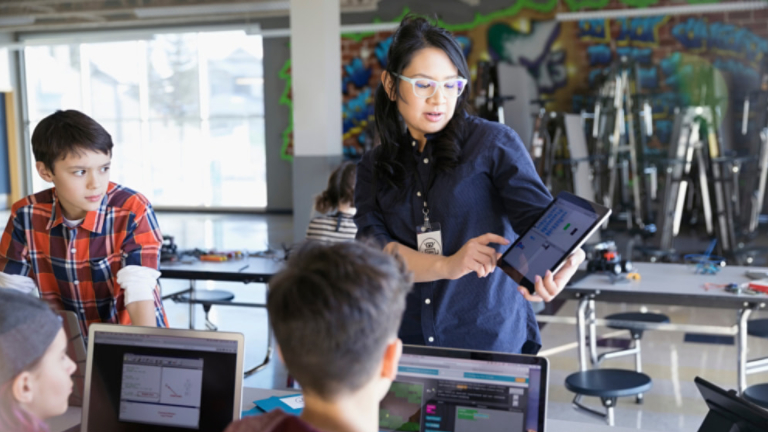Blog
Published: August 22, 2022
The VL3 Educates Today’s Students for Tomorrow’s Workforce
There is a need to fill the talent pipeline for science, technology, engineering and mathematics (STEM) related jobs. Trane has a solution to help with this. The Trane Virtual Living Learning Lab (VL3) offers an innovative approach that turns your building into a broad-based learning tool for students, to help them be more prepared for their future careers.
Quick Facts
- Industry
- K-12
- Topics
- STEM

There is a need to fill the talent pipeline for science, technology, engineering and mathematics (STEM) related jobs. Trane has a solution to help with this. The Trane Virtual Living Learning Lab (VL3) offers an innovative approach that turns your building into a broad-based learning tool for students, to help them be more prepared for their future careers.
What is the VL3?
The VL3 allows students to gain real-world insight on how buildings operate and use energy. It also shows students how they can make a positive difference for a sustainable future. By developing students’ data analytics and critical thinking skills, the VL3 supports career technical education (CTE) and provides a pathway that blends critical STEM learning and technical skills.
How Does the VL3 Work?
Rooted in a proven, comprehensive approach to integrating education programs with student experience, the VL3 creates a digital copy of your campus building management system. This digital copy allows students to study and learn about energy and building systems without a risk of disturbing the operations of the facility while providing students with the technical skills needed to solve complex, real-world problems.
While the VL3 includes student-designed dashboards which enable leveraging your controls systems and other connected subsystems as a learning tool, it offers far more than that. From seeing and interacting with their school’s data, students can continually analyze energy and building performance and make recommendations for better efficiency and use. The VL3 also benefits students with the opportunity to earn industry-recognized certifications that they can use to demonstrate what they have learned to their future prospective employers.
The VL3 Community Connected Vision
While typically, students will work on a digital copy of their own school, the VL3 could be expanded to other facilities. Any building that has the VL3 platform can be connected to other facilities and share data for broader learning opportunities. For example, a public-school student could see energy and operating data from city hall, university facilities, an athletic stadium, and more.

This insight offers students a whole new perspective and opportunity to learn about the energy ecosystem and become more vested in a sustainable future for themselves and their communities.
Students Today, Valuable Employees Tomorrow
The VL3 can support students of all socioeconomic backgrounds in choosing and pursuing purposeful and rewarding careers in the dynamic field of energy and sustainability. With access to real data that the VL3 offers and the educational support it includes, students can better position themselves to make a real difference on energy and sustainability in their classroom, community, and world.
Learn more about the VL3 and how it can support learning for your students.
Trane is a strategic business of Trane Technologies, a global climate innovator. Through its Sustainable Futures program, Trane Technologies brings bold action globally to uplift under-represented students through education and pathways to green and STEM careers. The futures of both our industry and our planet demand bold, diverse thinking and we're determined to inspire a new generation.
K-12 Education

About the author
Mike Hines - Education Strategic Sales Leader, Trane Commercial
Mike heads Trane’s strategic educational offerings and initiatives for the United States and Canada. In this role, he helps school districts meet their goals of providing a quality education which will allow all students to thrive in the workplace and in their communities. This includes providing pathways for secondary and post-secondary students to enhance their STEM-skill acquisition and understanding of future career opportunities.
The son of an educator who taught hearing impaired students, Mike has spent over 30 years serving education leaders to help optimize the learning experience for students and teachers. Mike holds a bachelor’s degree in finance from the University of Wyoming and a master’s in business administration degree from the University of Nebraska
